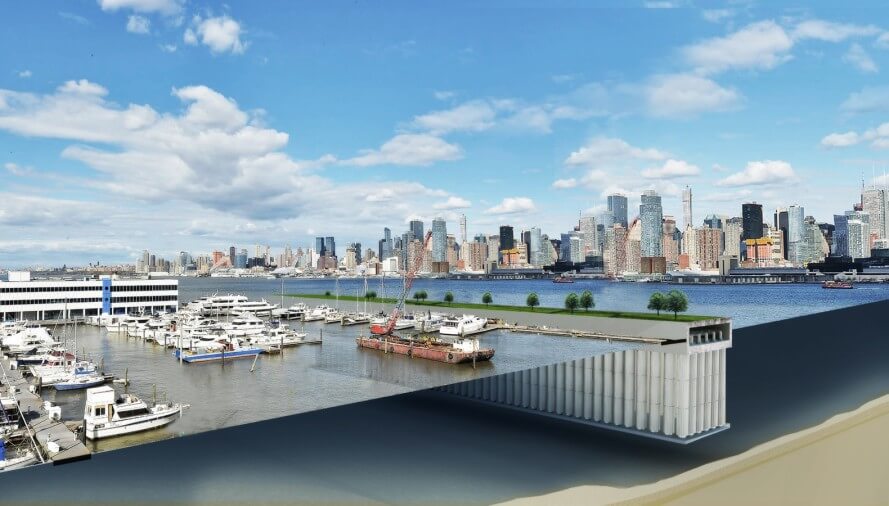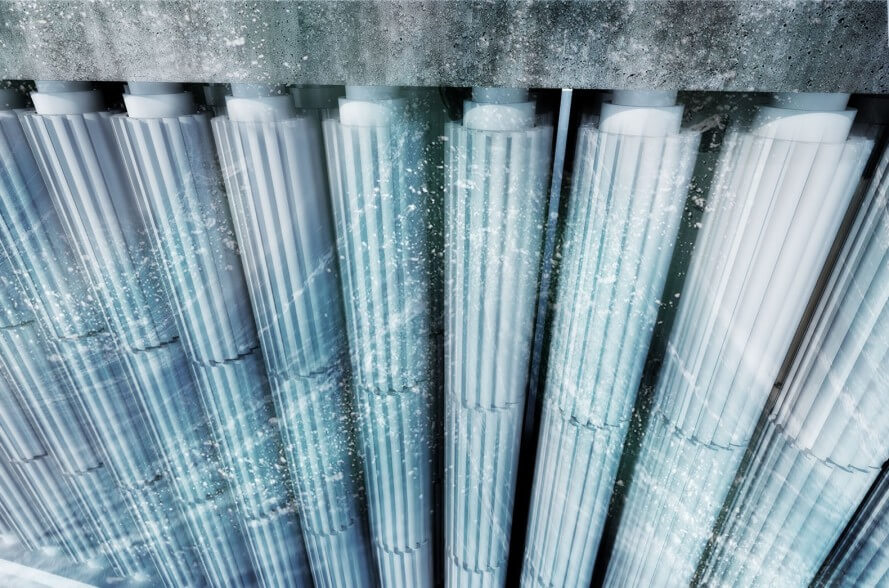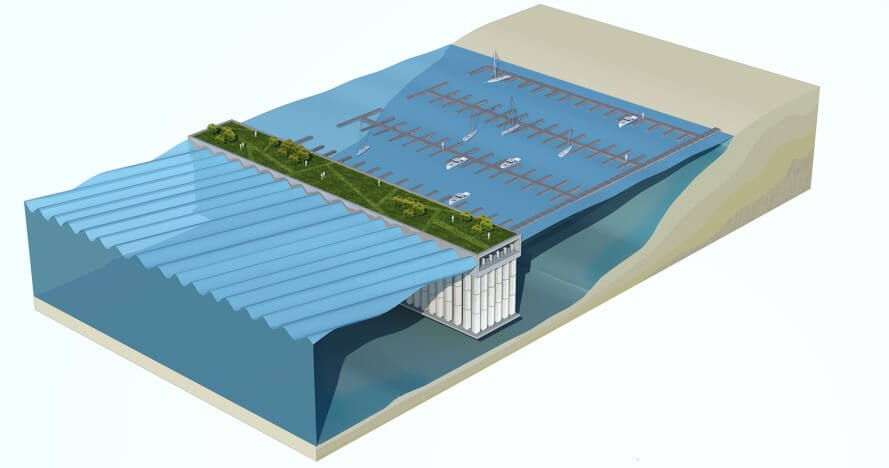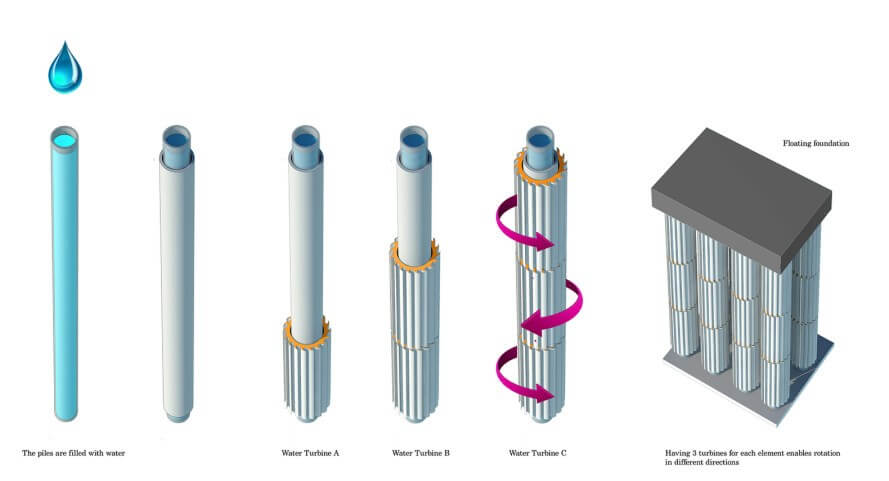Parthenon, The Floating Sea Wall
Inhabitat, Tafline Laylin, December 2015
Certain world leaders might be dragging their feet on addressing climate change, but in the meantime, Koen Olthuis and the rest of the Waterstudio crew are working on solutions that we can use today. The Blue energy floating sea wall is a floating breakwater that doubles as an energy generator. Called The Parthenon, the floating breakwater not only stems the crash of water pushing into a harbor, but harvests the tremendous energy a wall of water like that can generate.

Waterstudio used the Hudson River to illustrate their new design’s function. “In a harbour on the Hudson river in New York the wave conditions are so strong that a sea wall must protect its boats. The strong current in the river is constantly attacking it and water is pushing itself against and through the fixed wall, which results in more corrosion of the sea wall every year.”

The floating sea wall acts as a permeable breakwater that converts the wave power into electrical energy while reducing the waves’ impact on the harbor at the same time. “The floating breakwater lives with the force of the river instead of fighting it,” they told Inhabitat in an email.
Related: Aquatect Koen Olthuis tells Inhabitat how to embrace rising sea levels

The columns of the sea wall are comprised of 3-foot cylinders that rotate – both clockwise and counter clockwise – at low speed. The energy created by this rotation is then captured in a concrete box inside the floating platform. The cylinders are filled with water to give the structure flexibility without affecting in any way the efficacy of the wall in reducing the wave’s impact on the harbor. The whole thing is then anchored to the riverbed, and the top can double as an urban green space or boulevard.

“The Parthenon blue energy sea wall resembles the column structure of the famous ancient temple in Greece,” according to Waterstudio, “but divers see it as a part of the sunken city of Atlantis.”





